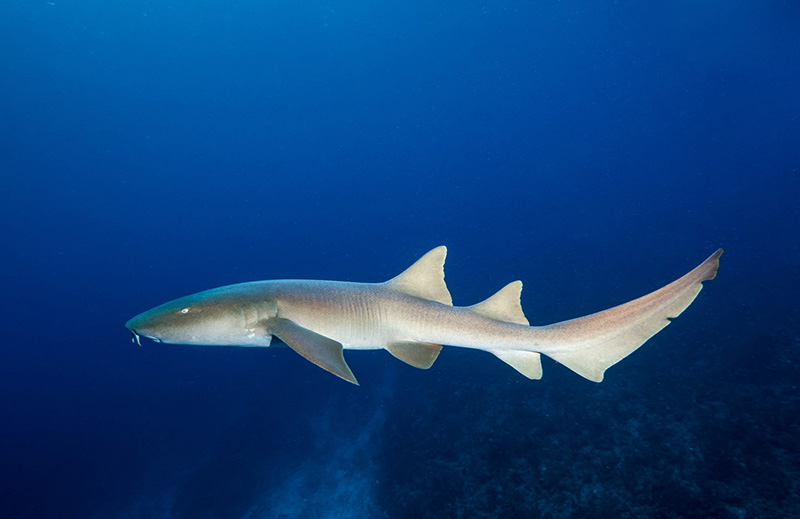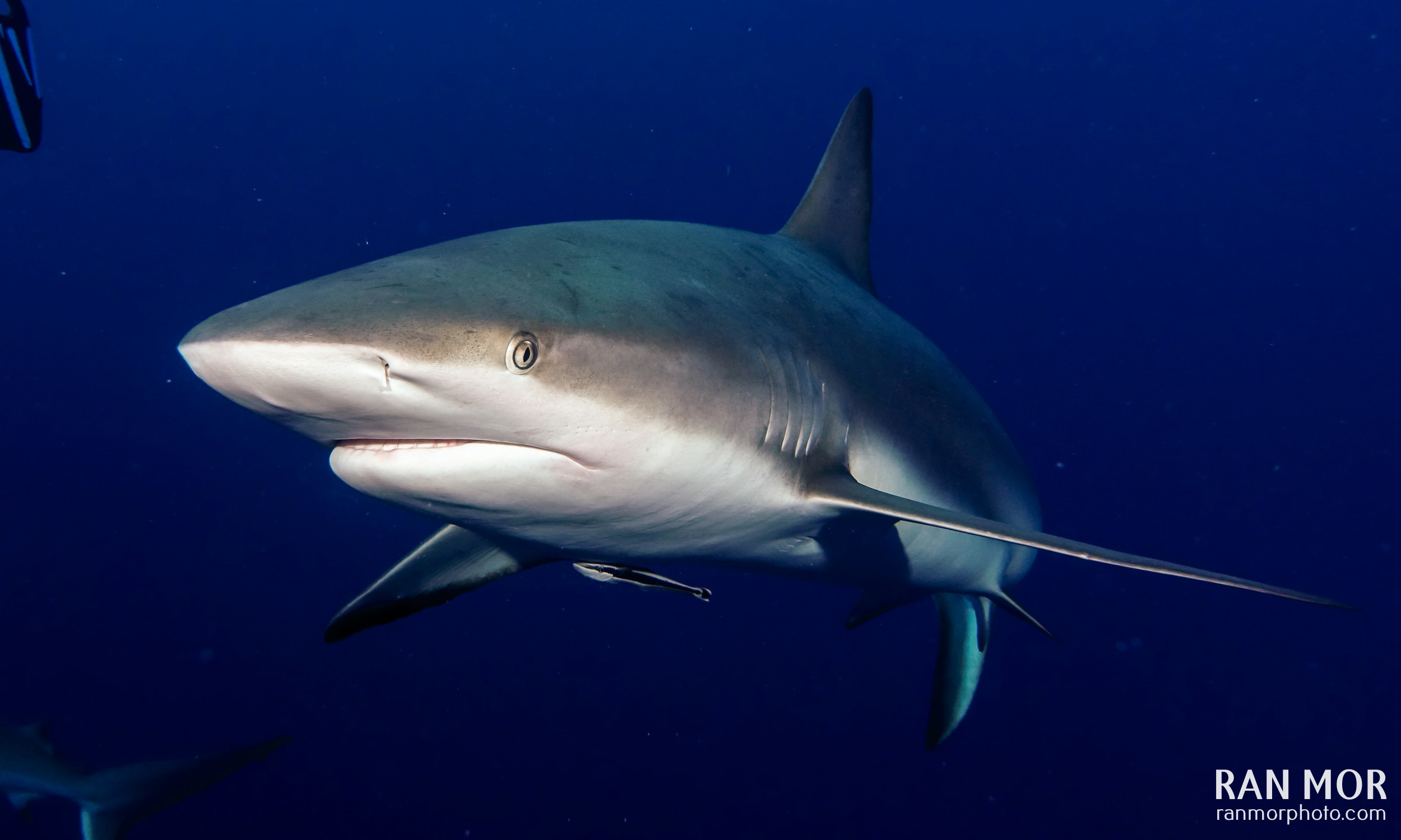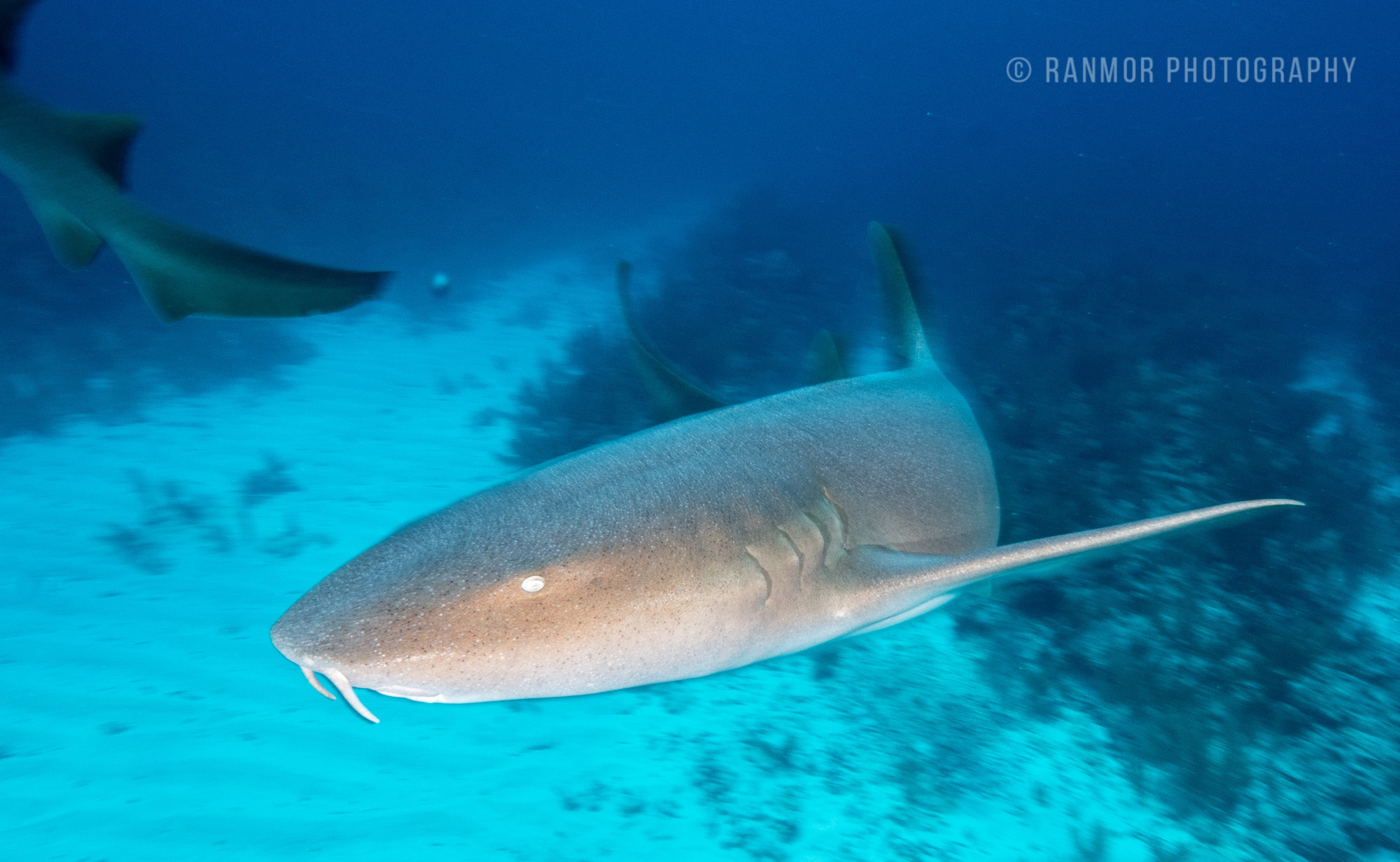All About Sharks: From Fear to Fascination

A shark is so much more than “Jaws.” But for years, our collective image of sharks has been narrowed into a lean, mean, eating-machine by horror thrillers and our own addiction to sensational news and magazine articles. Now, as sharks stand perilously close to the brink of a dive toward extinction, their real nature, in all its diversity, is incredibly important.
Varying sources number the world’s shark species at 400, 450, or even over 500. Very few of these animals look or act like your “typical” great white. The dwarf lantern shark, Earth’s smallest shark species, can fit in the palm of your hand (measuring 8 inches). The largest, a whale shark (measuring 12 meters), eats only plankton- not scary at all. The world of sharks is a world of strange and superpower-like abilities, where species can be so different from each other that they barely seem related.

Extraordinary Anatomy
A shark has no bones. The structure of its body hangs on a skeleton of cartilage, which is flexible and light. Because they have a spinal column, sharks are classified as vertebrates. In fact, they were the very first vertebrate predators to appear on Earth- which they did over 400 million years ago, predating dinosaurs and the modern continents.
Sharks’ senses and shapes have evolved to make them spectacular hunters indeed, though not always in the stereotypical, torpedo-head, cylindrical-body form. Each species is specialized for its particular habitat and diet. For example, bottom-dwelling wobbegong sharks have flattened bodies which let them scour the sand for prey, and wide mouths which suck it in whole. A thresher shark hauls around a tail as long as its body so it can whip schools of fish into stunned disorientation. The cookie-cutter shark of the deep is a 20 inch, fearless attacker of larger fish; it bites, twists, and retreats, taking with it a neat circle of flesh and leaving a corresponding “cookie-shaped” scar.

All sharks do, however, share some interesting or impressive characteristics:
Sink or Swim
Sharks do not enjoy the convenience of a swim bladder, the gas-filled chamber which allows bony fish to hover at a given depth. Sharks must keep moving (and can only move forward) in order to stay “up.” To compensate, they have their light cartilaginous skeletons, which make it less tiring to swim.
Of course, some sharks don’t mind resting on the bottom. Nurse sharks, carpet sharks, and bamboo sharks, for example, are happy to stay near the benthic (bottom-dwelling) organisms they eat. However, this privilege of stillness is not enjoyed by all species. A shark must have a constant flow of water into its mouth and out through its gills to extract oxygen (to breathe). Only sharks who can pump fresh water through their gills without swimming can lie still. Other shark species, like the great white and the whale shark, can’t pump; they have to swim continually for their entire lives to stay alive.
Speedy Skin
A shark’s skin is covered in overlapping, v-shaped scales called denticles. They feel smooth if you pet a shark (not recommended) from head to tail, but feel like sandpaper in the opposite direction. The smooth flow of water along these denticles reduces friction and boosts speed.

Super-Senses
Sharks have most of the senses we do, and some others which are far past human capacity. Sharks’ sight, taste, and hearing are all well-developed. The eyes of deep-water sharks have a cat-like ability to see in the dark, while sharks inhabiting shallow, sunny water can sometimes see color. Their ability to taste accounts for instances of sharks releasing humans after biting; they realized they didn’t catch the right prey. Their hearing is sensitive to low-frequency sounds like distant splashing, which helps them hunt.
However, it’s their senses of touch (through the lateral line), and their electro-receptivity that make sharks stand out. The lateral line is a chain of pores on the side of the shark’s body. When water enters the pores, it stimulates special cells, which translate the pressure of the water into information about the location and movement of another organism nearby. Though “nearby” can be as far as 200 meters or more. Other pores, on the shark’s head, are specialized to receive and process the electrical signals produced by the contracting muscles of animals. If a fish is wounded and moving frantically, its strong electrical pulse will alert the shark to an easy meal.[i]

Fun Facts about Reproduction
Sharks grow slowly, live long, and put their energy into producing fewer, but well-developed, youngsters. Shark embryos have impressive abilities, whether they hatch inside or outside their mothers. Some that hatch while still in utero get extra nourishment by eating their siblings, or the remaining eggs. Other species don’t need to be so cannibalistic because they have a nourishing umbilical connection with the mother until they’re born- like humans. And in species which lay eggs externally, affixing them to the bottom of a rock, for example, the embryos can sense predators. They protect themselves by stilling the movement of their gills.
Habitat Diversity
Shark species thrive throughout the world’s oceans, from the polar ice-caps to the tropics, and the inky blackness of the deep sea to the sun-kissed shallows. Some sharks spend their whole life in one area, even in one reef. However, other species migrate, like great whites and whale sharks. Sharks’ electro-receptivity comes in handy for long journeys because they can use the Earth’s magnetic field as a compass.
However, migration doesn’t always change where a shark is on the map. “Vertical migration” is also practiced by some species, meaning that the shark travels back and forth between deep and shallow water. Blue sharks have been known to dive deeper than 500 meters, probably to catch deep-sea squid, but return to shallower water to warm up. Thresher sharks are famously elusive sharks who usually live in the deep, but near the Philippine island Malapascua, they rise to around 25 meters to access a local cleaning station.

Friend or Foe?
When it comes down to it, statistics offer a clear answer. It’s usually said that you are more likely to be killed by a dog, lightning, a cow, falling out of bed, an icicle, a champagne cork, a falling coconut, and famously, a vending machine, not to mention cars, tripping, and heart attacks.[ii] Sharks kill about 12 people per year; people kill about 11,417 sharks per hour.[iii] Another recently accepted statistic: people kill around 100 million sharks per year.[iv]
Many of these sharks are intentionally caught for the fin trade, a cruel and wasteful industry powered by mostly Asian countries’ desire for shark-fin soup. Luckily, the movement to outlaw shark finning worldwide is slowly gaining some momentum- though not yet enough to stop sharks’ downhill spiral. Many other sharks are caught unintentionally, as “by-catch.” This means that they get tangled or hooked by nets and fishing lines targeting other marine species. Until recent years, governments around the world weren’t particularly concerned about by-catch; they didn’t record sharks by species, or didn’t record them at all.
New research, however, proves that sharks shouldn’t only be protected because they are incredible creatures with a right to live; they also have an important role in ecosystems, controlling populations of smaller sharks and bony fish for general ecosystem health and function.[v] Governments, scientists, divers, and other people all over the world have started to take notice. Hopefully, with maintained momentum, sharks and all their mind-boggling powers, honed over millions of years of evolution, will also make it into the future.

[i] Some information on anatomy, reproduction, and distribution of sharks from http://ocean.si.edu/sharks
[ii] http://kafe.com/news/25-shocking-things-more-likely-to-kill-you-than-a-shark/, https://www.thoughtco.com/are-vending-machines-more-deadly-than-sharks-3970604
[iii] http://www.stopsharkfinning.net/shark-attack-infographic/
[iv] http://ocean.si.edu/sharks
[v] http://ngm.nationalgeographic.com/2008/07/kingman-reef/warne-text
- Strange Sharks – February 1, 2018
- Getting to know Jaws: the truth about great white sharks – October 20, 2017
- Reef Sharks: Coral’s Best Friend – September 26, 2017

 USD
USD